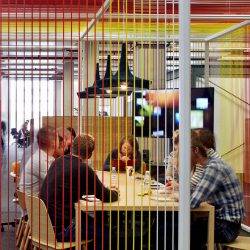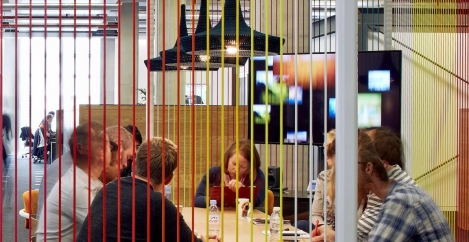June 23, 2024
North American office design lagging behind new working cultures
 A report from design firm Hassell and workplace analytics business Density paints what it claims is a concerning picture of North American tech offices. It says that tech firms, once considered pioneers in innovative office design, are lagging behind the evolving work landscape. The report [registration] analysed over 1.4 million square feet of workspace usage between May 2023 and May 2024, revealed what it says is a troubling trend: underutilisation. On average, these tech offices only reached a peak occupancy of 34 percent, meaning a significant portion of the space – potentially costing companies up to $40 million annually in wasted rent – sits empty.
A report from design firm Hassell and workplace analytics business Density paints what it claims is a concerning picture of North American tech offices. It says that tech firms, once considered pioneers in innovative office design, are lagging behind the evolving work landscape. The report [registration] analysed over 1.4 million square feet of workspace usage between May 2023 and May 2024, revealed what it says is a troubling trend: underutilisation. On average, these tech offices only reached a peak occupancy of 34 percent, meaning a significant portion of the space – potentially costing companies up to $40 million annually in wasted rent – sits empty.
“Tech companies used to be the trendsetters in workplace design,” commented Daniel Davis, head of research at Hassell. “Their amenity-filled offices were the envy of the business world.” However, the transition to hybrid and remote work models sparked by the pandemic has left many of these spaces ill-equipped for the current needs.
One major culprit claimed in the study is an overreliance on open-plan offices. Every workspace analysed lacked sufficient private areas, forcing employees to utilise meeting rooms for focused work or video calls around a third of the time.
The report also claims to shed light on how employee preferences influence office usage. When given a choice about their work schedules, employees prioritise using the office for in-person collaboration. In workplaces with flexible schedules, employees spend nearly half their in-office time in meeting rooms compared to those with mandated in-office days.
The report claims that enforcing a mandatory three-day in-office policy only increased peak daily utilization from 29 percent to 46 percent. The report suggests that hybrid work policies may not be as strictly followed as initially anticipated.
The report also offers office design solutions. It encourages firms to embrace new office designs that cater to hybrid work models. Additionally, optimizing space utilisation can lead to cost savings and a reduced environmental footprint. Finally, fostering a culture of collaboration and adaptability through versatile work environments that can be easily reconfigured for different needs and group sizes is crucial.














